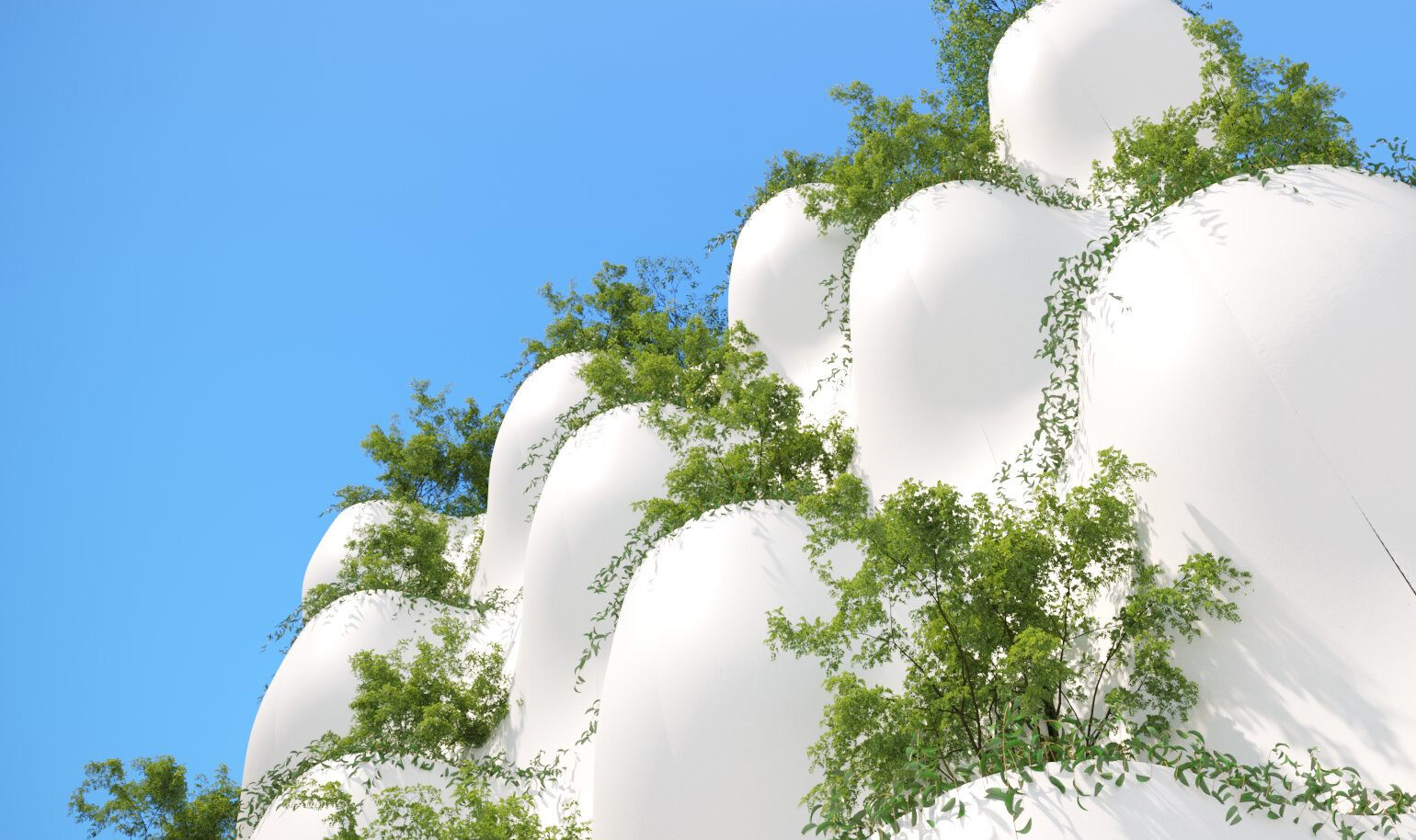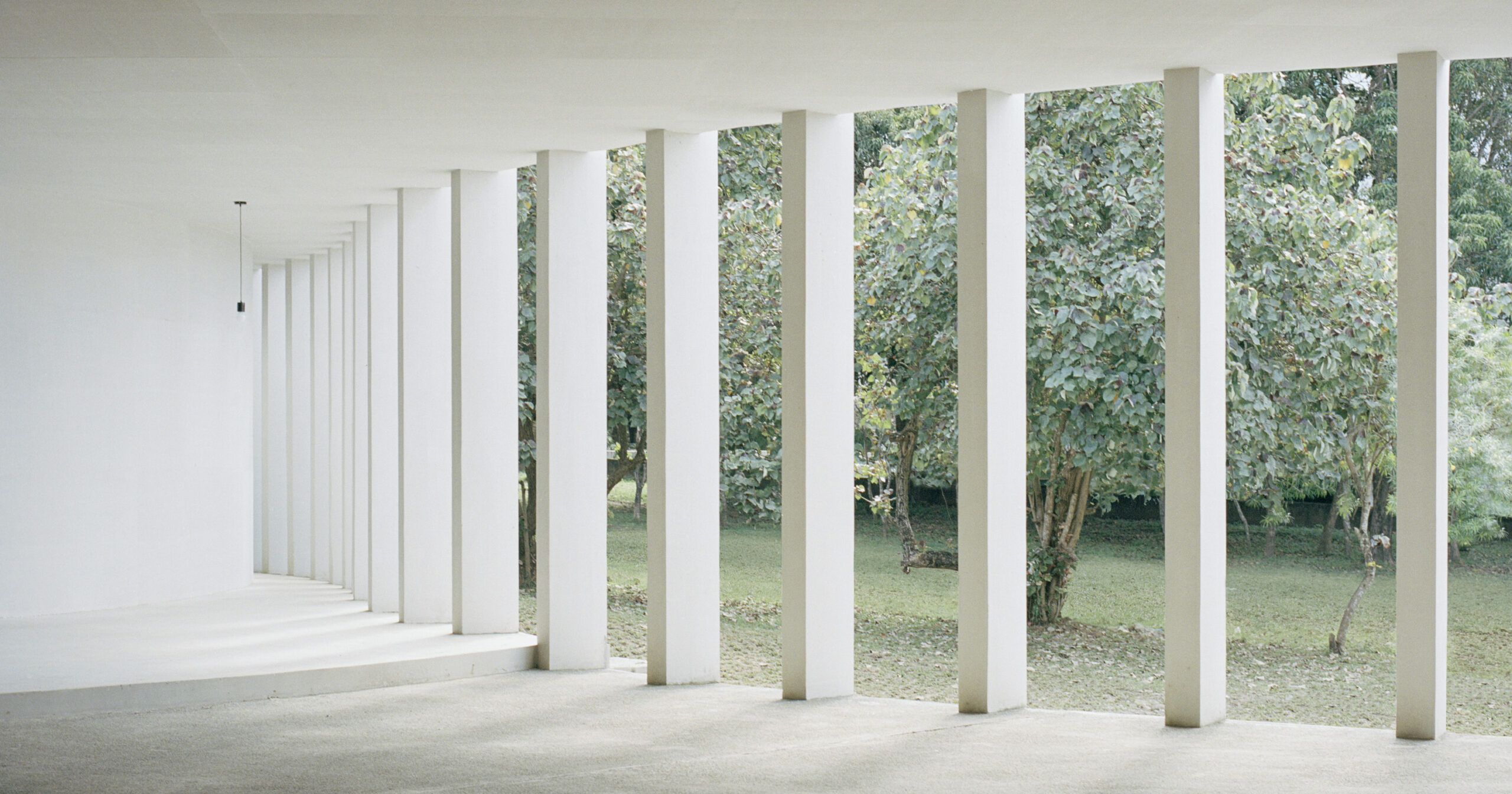Architects: Want to have your project featured? Showcase your work through Architizer and sign up for our inspirational newsletters.
Deserts are a window into warming climates. Redefining how we design and build, climate change is forcing architects to rethink what it means to live with these conditions. From heat shelters to water conservation, creating architecture for the desert requires the thoughtful use of materials and careful attention to solar heat gain. New desert architecture is finding a balance between pragmatic needs and poetic interventions.
As explorations in program, landscape and local materials, the following projects showcase desert design across the world. Whether reinterpreting vernacular traditions or testing new construction methods, they illustrate how high-heat conditions shape design. The projects also represent a variety of scales, from intimate pavilions to larger cultural spaces. Each built work of architecture underlines the importance of designing for climate in a rapidly warming world.
Pima Dynamite Trailhead
By Weddle Gilmore Architects, Scottsdale, AZ, United States
Jury Winner, 11th Annual A+Awards, Public Parks & Green Spaces
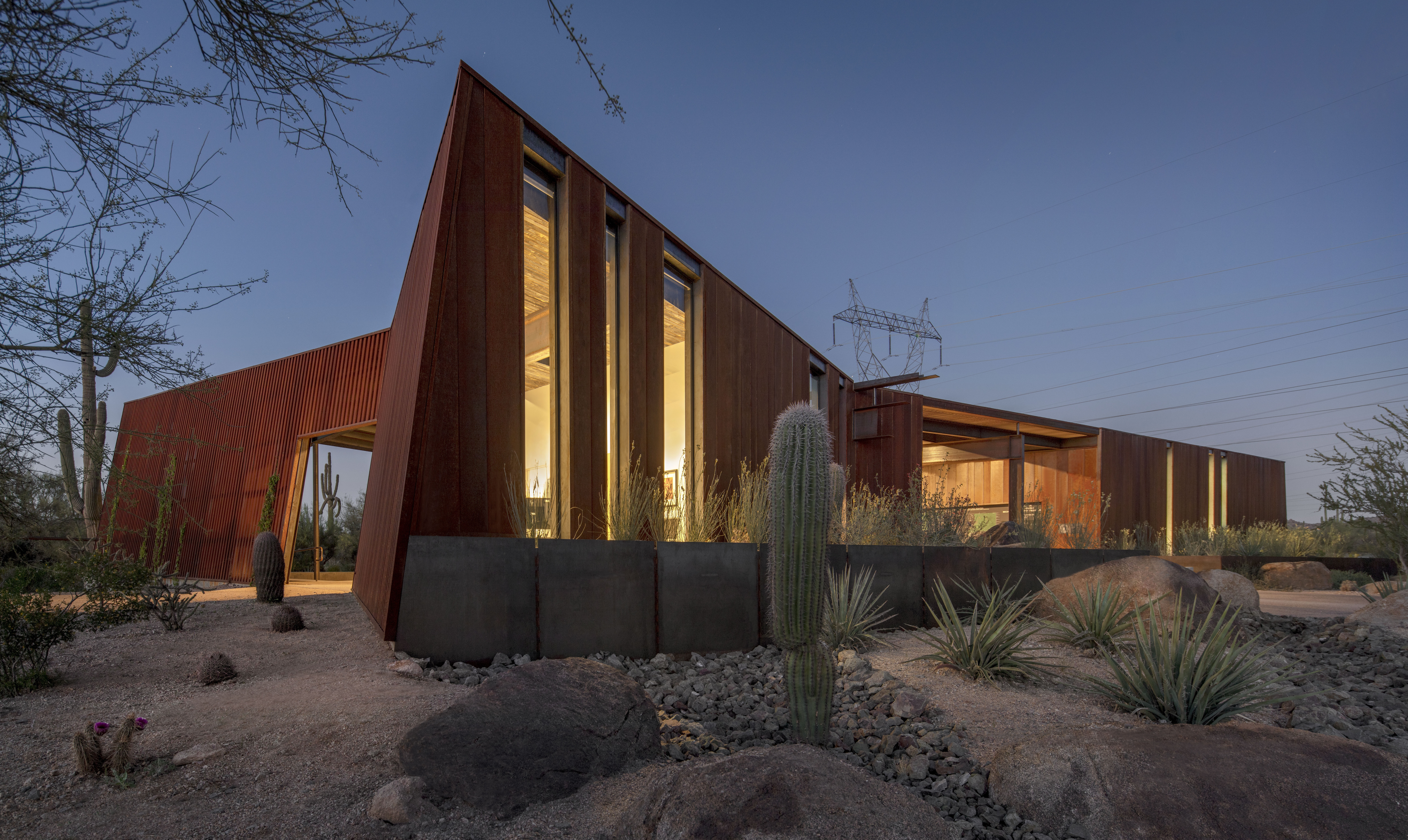
 Located at the boundary between the city and desert, the Pima Dynamite Trailhead was designed to create a public gateway into the northern McDowell Sonoran Preserve. The trailhead responds to the unique conditions of its site to provide an interface for hikers, bikers and equestrians to enjoy the beauty of the Sonoran Desert. The structure is delicately integrated into the natural drainage flows and topography and within the constraints of two powerline corridors traversing this region.
Located at the boundary between the city and desert, the Pima Dynamite Trailhead was designed to create a public gateway into the northern McDowell Sonoran Preserve. The trailhead responds to the unique conditions of its site to provide an interface for hikers, bikers and equestrians to enjoy the beauty of the Sonoran Desert. The structure is delicately integrated into the natural drainage flows and topography and within the constraints of two powerline corridors traversing this region.
Salvaged saguaros, trees, and soils from the site are combined with additional native plants to restore previous site disturbances and seamlessly tie into the native desert. The trailhead is also oriented to reveal vistas and frame views of the preserve with a low folding form that responds to the harsh climate and creates expansive outdoor shaded spaces. The structure includes community restrooms, covered amphitheater, and indoor-outdoor meeting space along with staff offices and maintenance facilities. Its corten steel skin articulates each façade with texture, transparency, and shadow, allowing the building to naturally weather into the desert.
The Rajkumari Ratnavati Girl’s School
By Diana Kellogg Architects, Jaisalmer, India
Project of the Year, 10th Annual A+Awards
Jury Winner, 10th Annual A+Awards, Primary & High Schools
Jury Winner, 10th Annual A+Awards, Architecture +For Good
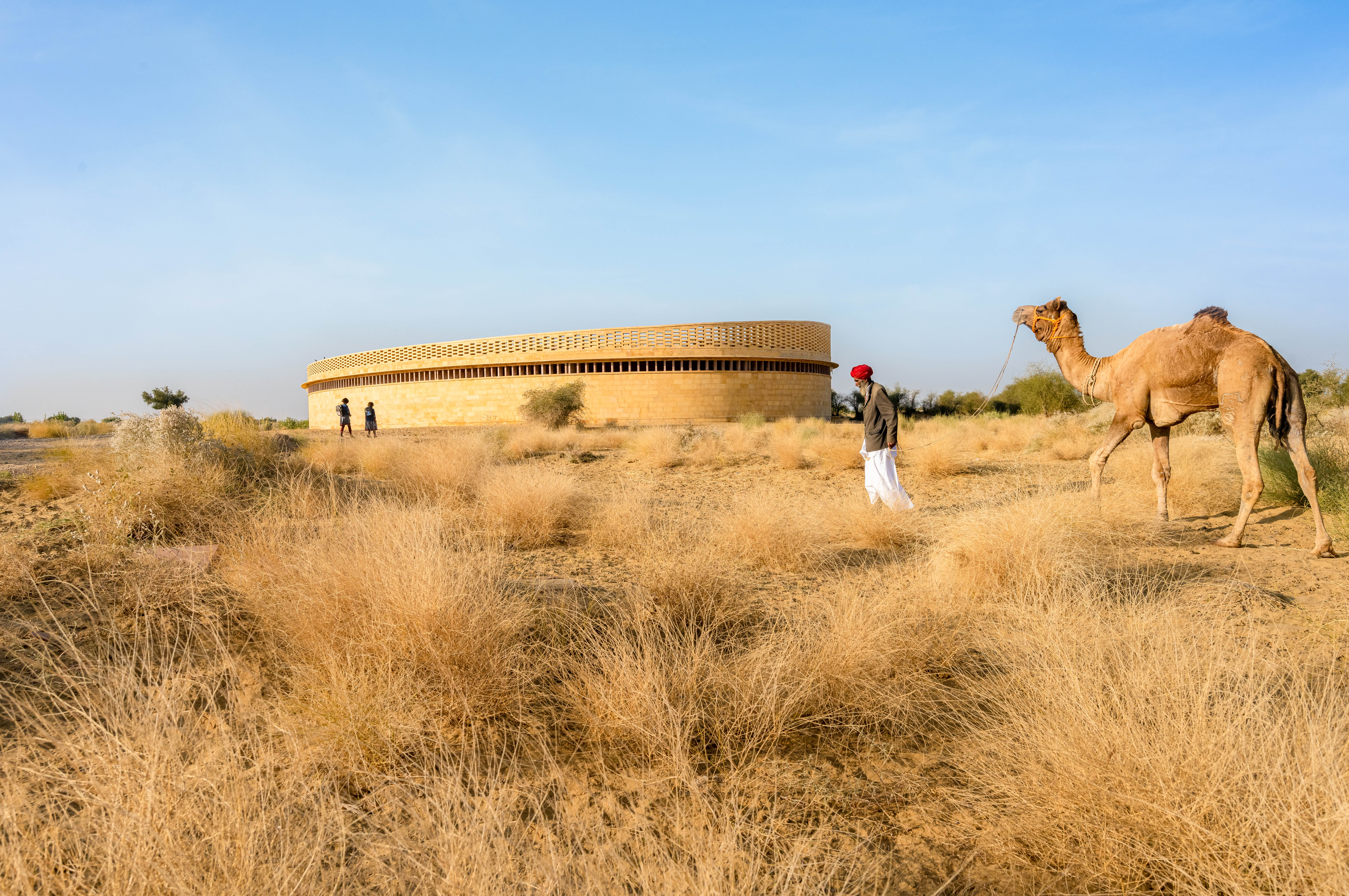
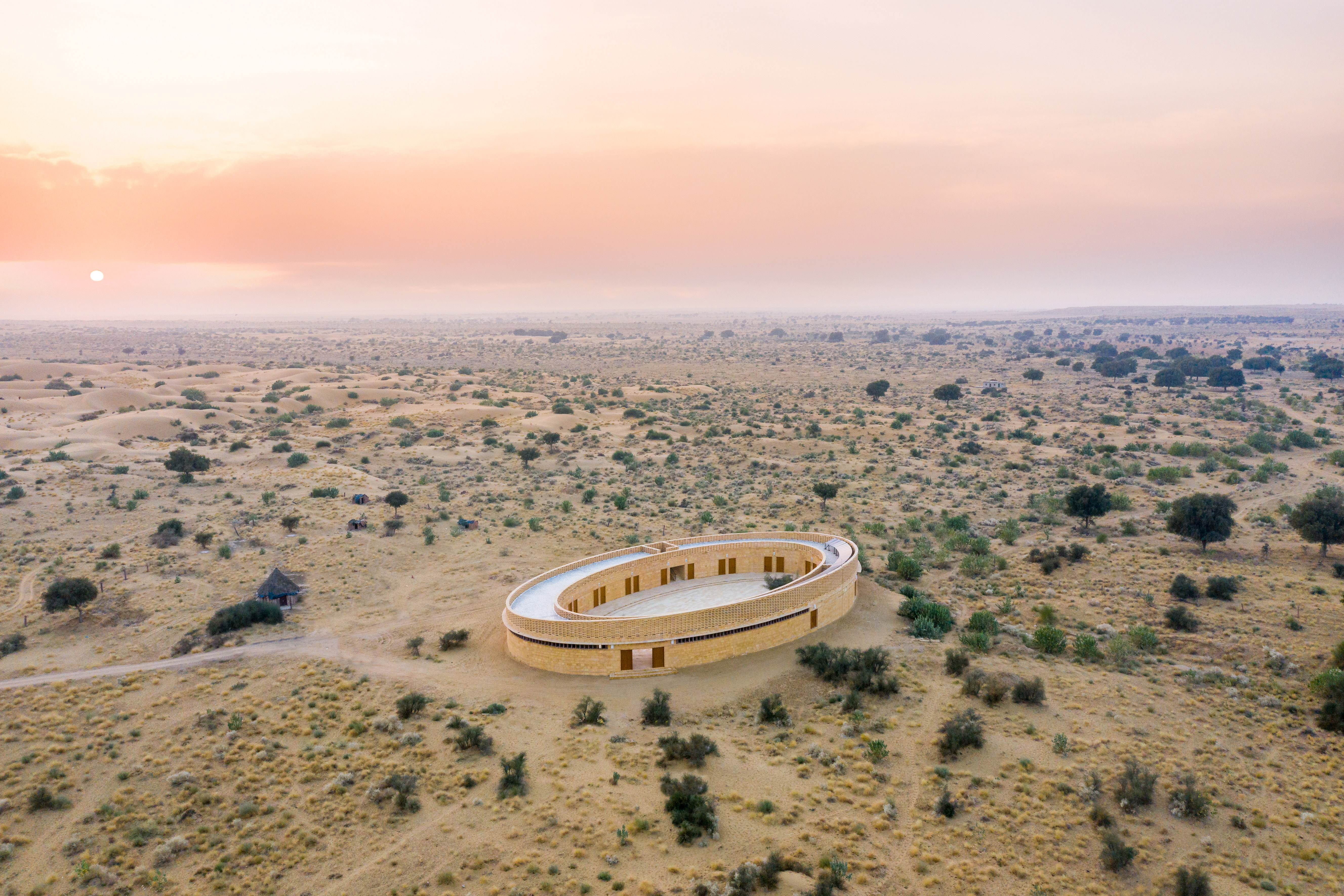 For the Rajkumari Ratnavati Girl’s School, Diana Kellogg Architects was commissioned by CITTA, a non-profit organization that supports development in some of the most economically challenged, geographically remote or marginalized communities in the world. The Rajkumari school was designed to serve more than 400 girls. Located in the Thar Desert of Jaisalmer in Rajasthan, this particular region of India is where female literacy barely rises above 30%. The school will be the first in a complex of three buildings known as the GYAAN Center, which will also consist of a performance and art exhibition space with a library and museum.
For the Rajkumari Ratnavati Girl’s School, Diana Kellogg Architects was commissioned by CITTA, a non-profit organization that supports development in some of the most economically challenged, geographically remote or marginalized communities in the world. The Rajkumari school was designed to serve more than 400 girls. Located in the Thar Desert of Jaisalmer in Rajasthan, this particular region of India is where female literacy barely rises above 30%. The school will be the first in a complex of three buildings known as the GYAAN Center, which will also consist of a performance and art exhibition space with a library and museum.
The GYAAN Center will empower and educate women, helping them establish economic independence for themselves, their families, and their communities. Since the GYAAN Center is designed by a woman for women, Kellogg looked at feminine symbols across cultures when starting the design process. Three ovals represent the power of femininity and infinity, as well as replicate the planes of the sand-dunes in the region of Jaisalmer.
Shapeshifter
By OPA, Reno, NV, United States
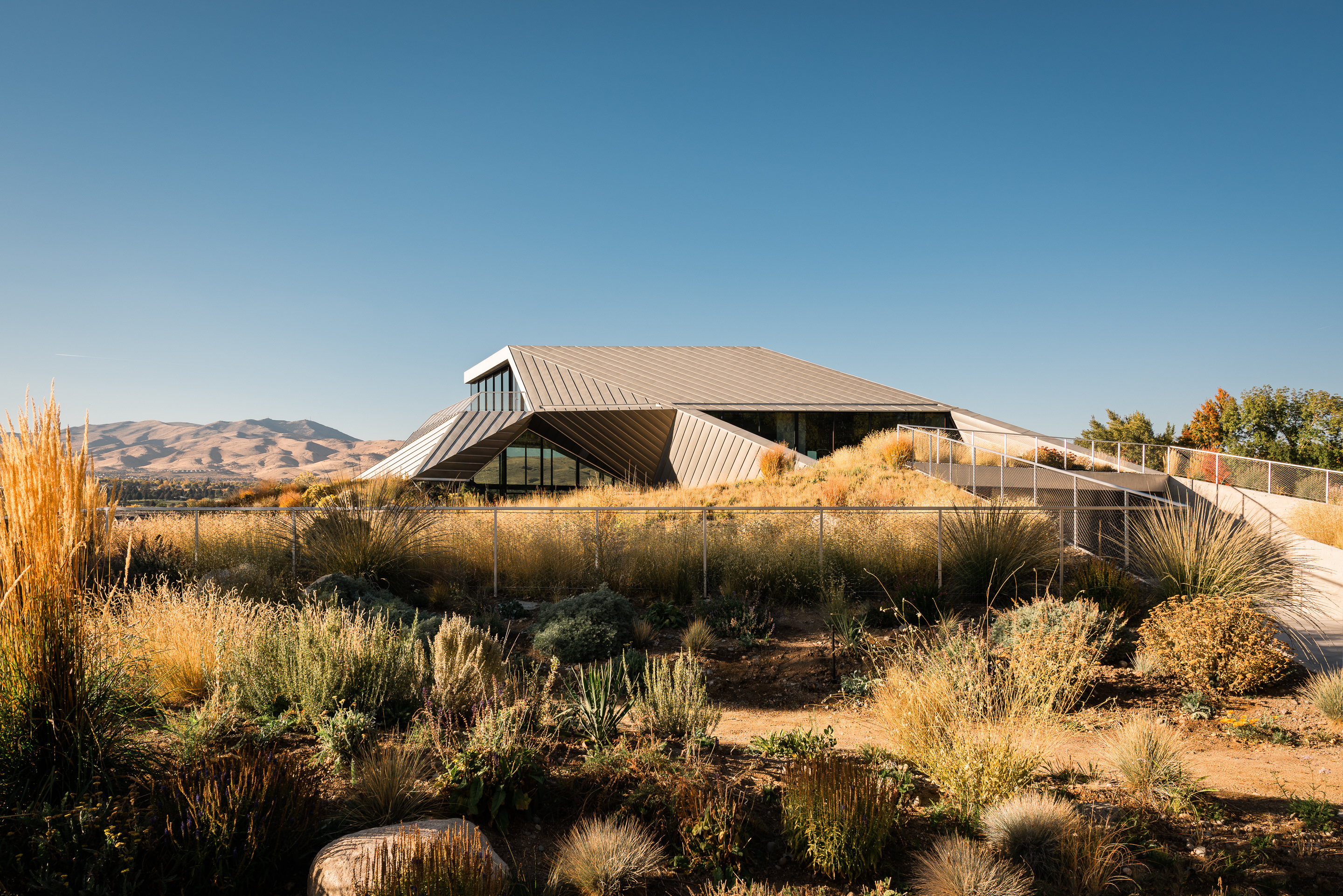
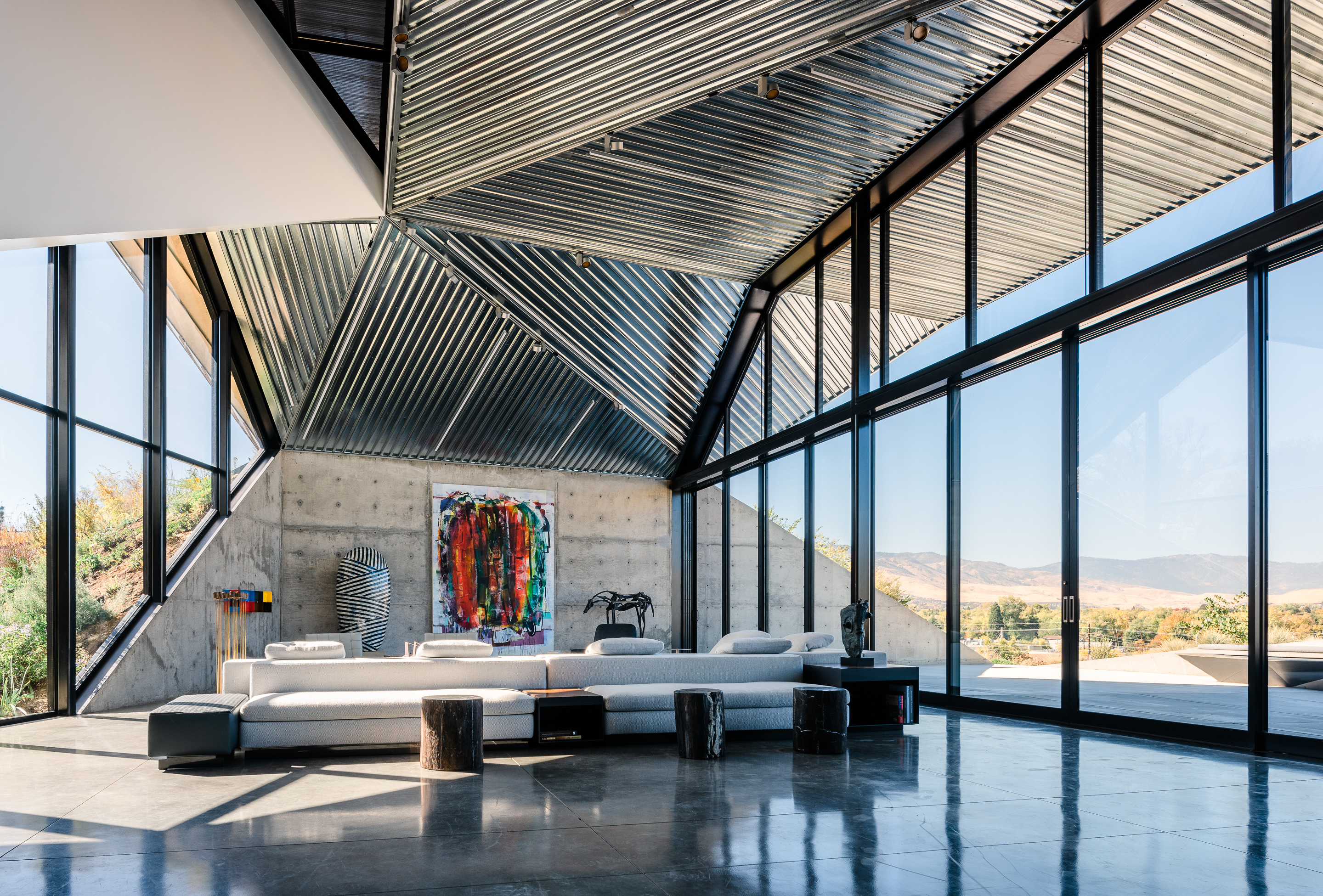 Ogrydziak Prillinger Architects wanted to explore a new model for ecological architecture. Inspired by its high desert site, this house is mostly embedded below the existing topography of the native landscape. The ground itself provides protection against the harsh desert landscape to link site and dwelling. Where the house emerges from the ground, a two-foot-thick perimeter envelope extends this thermal protection. Combined with high-performance glass, the result is a building which maintains a comfortable living temperature in an extreme environment using only radiant heating and cooling.
Ogrydziak Prillinger Architects wanted to explore a new model for ecological architecture. Inspired by its high desert site, this house is mostly embedded below the existing topography of the native landscape. The ground itself provides protection against the harsh desert landscape to link site and dwelling. Where the house emerges from the ground, a two-foot-thick perimeter envelope extends this thermal protection. Combined with high-performance glass, the result is a building which maintains a comfortable living temperature in an extreme environment using only radiant heating and cooling.
Formally, both house and site are rendered as a single planar mesh. As the team outlines, every edge is entirely shared, with no edges terminating in the middle of another edge. This results in a flow of space that supports extreme difference without discontinuities. Elements of house and site slide into each other; topologically, the house is spatially slippery.
Wagner Noel Performing Arts Center
By Bora Architects, Midland, TX, United States
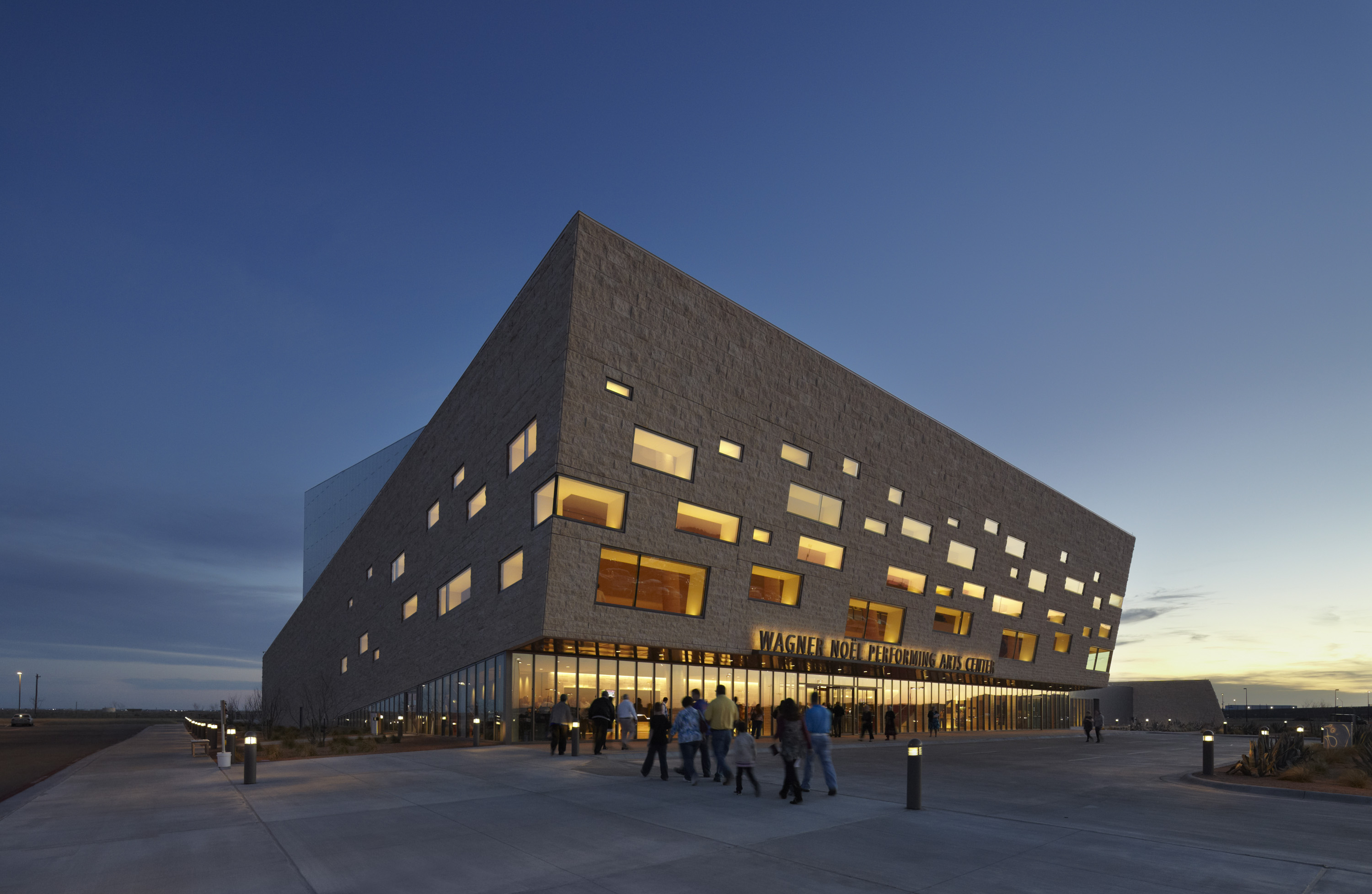
 The new Wagner Noel Performing Arts Center stands as a beacon for the arts in the desert. Hovering above the flat plain of West Texas, the project was made as a symbol for the University of Texas as well as the communities of Midland and Odessa. The team wanted the building’s dramatic form to recall the underlying geologic structure of the Permian Basin, Texas’s petroleum-producing region. By thrusting the building’s volumes along inclines and declines and cladding them in local limestone, the building seems formed from the geologic strata of the site.
The new Wagner Noel Performing Arts Center stands as a beacon for the arts in the desert. Hovering above the flat plain of West Texas, the project was made as a symbol for the University of Texas as well as the communities of Midland and Odessa. The team wanted the building’s dramatic form to recall the underlying geologic structure of the Permian Basin, Texas’s petroleum-producing region. By thrusting the building’s volumes along inclines and declines and cladding them in local limestone, the building seems formed from the geologic strata of the site.
The multi-use venue accommodates lectures, screenings, and touring productions from local and national performing arts groups. The center also provides much-needed instructional space designed for the university’s growing music education program. The building design and systems are optimized for the harsh conditions of West Texas. Sustainable design features include thoughtfully placed windows, native plants, displacement ventilation and daylight sensing lighting controls.
Museum of Outdoor Arts Element House
By MOS Architects, NM, United States

 MOS designed the Museum of Outdoor Arts Element House as a structural insulated panel (SIPS) modular building. It was also designed to operate independently of public utilities by integrating passive systems and on-site energy-generation. The house functions as a guest house and visitor center for Star Axis, a nearby land art project by the artist Charles Ross in New Mexico.
MOS designed the Museum of Outdoor Arts Element House as a structural insulated panel (SIPS) modular building. It was also designed to operate independently of public utilities by integrating passive systems and on-site energy-generation. The house functions as a guest house and visitor center for Star Axis, a nearby land art project by the artist Charles Ross in New Mexico.
Using simple sustainable building practices to increase environmental performance, everything is stripped down to basic components. The organization of the house is based on an expansive geometric system of growth, radiating and aggregating outward, one module after another. A decentralized field of solar chimney volumes replaces the traditional solid mass of the domestic hearth.
Desert Botanical Garden Horticulture Center
By 180 Degrees Inc, Phoenix, AZ, United States

 Over decades, substandard and ad-hoc situations have now led to opportunities to further the garden’s mission by creating a new center for tours and better plant collection health. Phase I included site work for the entire horticulture center masterplan, as wells a automated state-of-the-art greenhouses, break area, and an education center. Greenhouses and the education center were selected as the first priorities in a phased approach to the project.
Over decades, substandard and ad-hoc situations have now led to opportunities to further the garden’s mission by creating a new center for tours and better plant collection health. Phase I included site work for the entire horticulture center masterplan, as wells a automated state-of-the-art greenhouses, break area, and an education center. Greenhouses and the education center were selected as the first priorities in a phased approach to the project.
With plants as the central focus of the garden, the greenhouses are placed at its center. The greenhouses are clad in energy-saving polycarbonate panels that diffuse light for greater plant health. Operable louvers above the greenhouses provide optimal light levels while reducing energy need for cooling the structure. Roof water is collected in two large cisterns and in turn is utilized within the greenhouses. A computer control system automatically adjusts exterior louvers, the operable roof, interior shades, evaporative cooling, heaters and fans for optimal plant health.
Desert X AlUla Visitor Centre
By KWY.studio, AlUla, Saudi Arabia
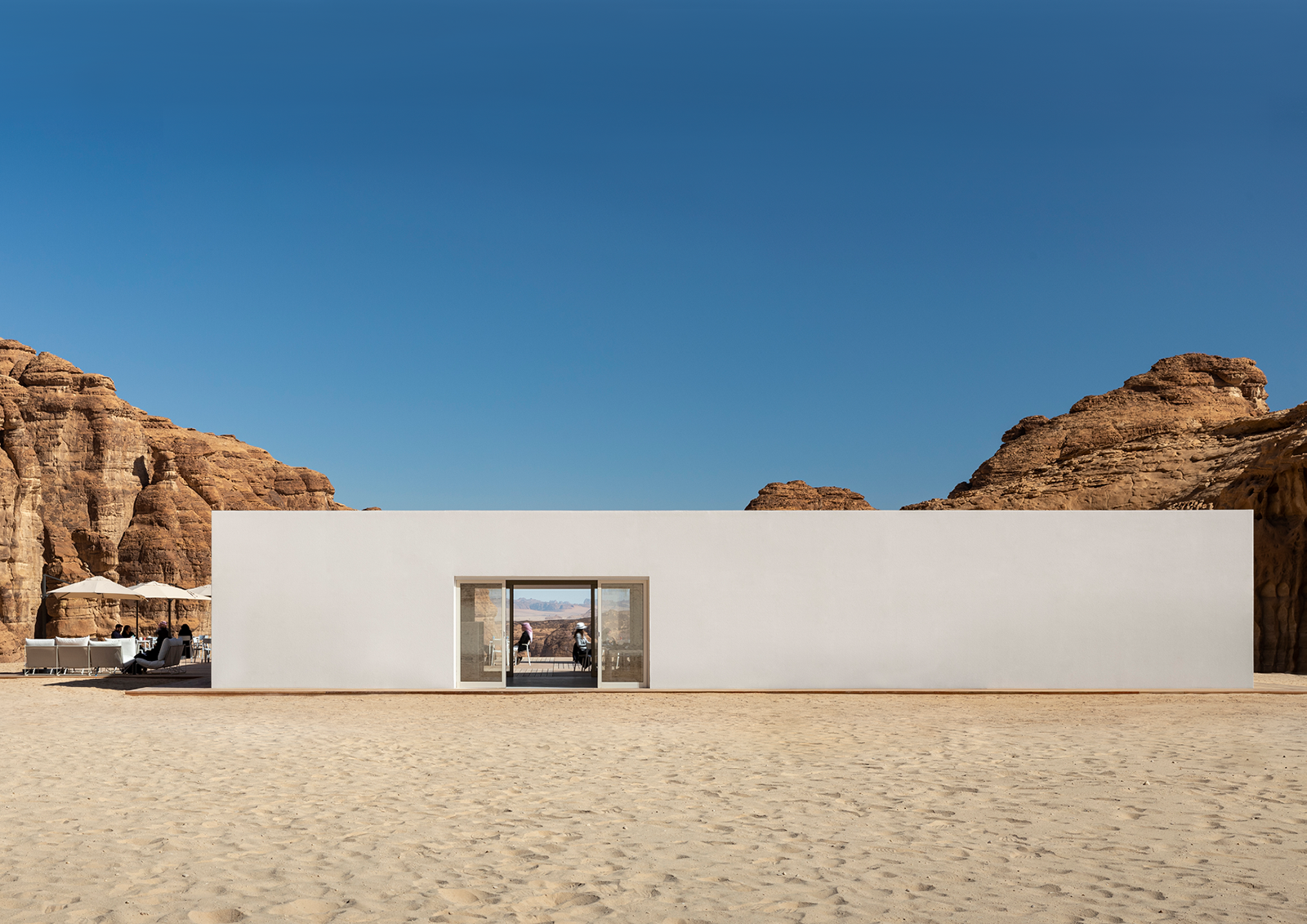

 This Visitor Centre is a simple and square building that’s carefully isolated at the entrance of the Hidden Canyon. It welcomes visitors for the first Desert X Al Ula exhibition: it offers basic amenities such as an information centre and a café as well as a generously shaded courtyard and a viewing deck outside. It is a place to rest and find shelter in the open desert, while its courtyard frames views into the sky and the surrounding landscape. It is a study in scale and our relationship with nature.
This Visitor Centre is a simple and square building that’s carefully isolated at the entrance of the Hidden Canyon. It welcomes visitors for the first Desert X Al Ula exhibition: it offers basic amenities such as an information centre and a café as well as a generously shaded courtyard and a viewing deck outside. It is a place to rest and find shelter in the open desert, while its courtyard frames views into the sky and the surrounding landscape. It is a study in scale and our relationship with nature.
As the design team explains, the circular roof opening creates a particular atmosphere — a perfect shape framing the rocks and the sky. The two entrances into the courtyard are viewing axis extended by the transparent doors into the information centre and the café: the opposing windows in each of those spaces giving a framed view back into the desert. The moment one enters the apparently enclosed courtyard is the very moment when one sees through the building.
Architects: Want to have your project featured? Showcase your work through Architizer and sign up for our inspirational newsletters.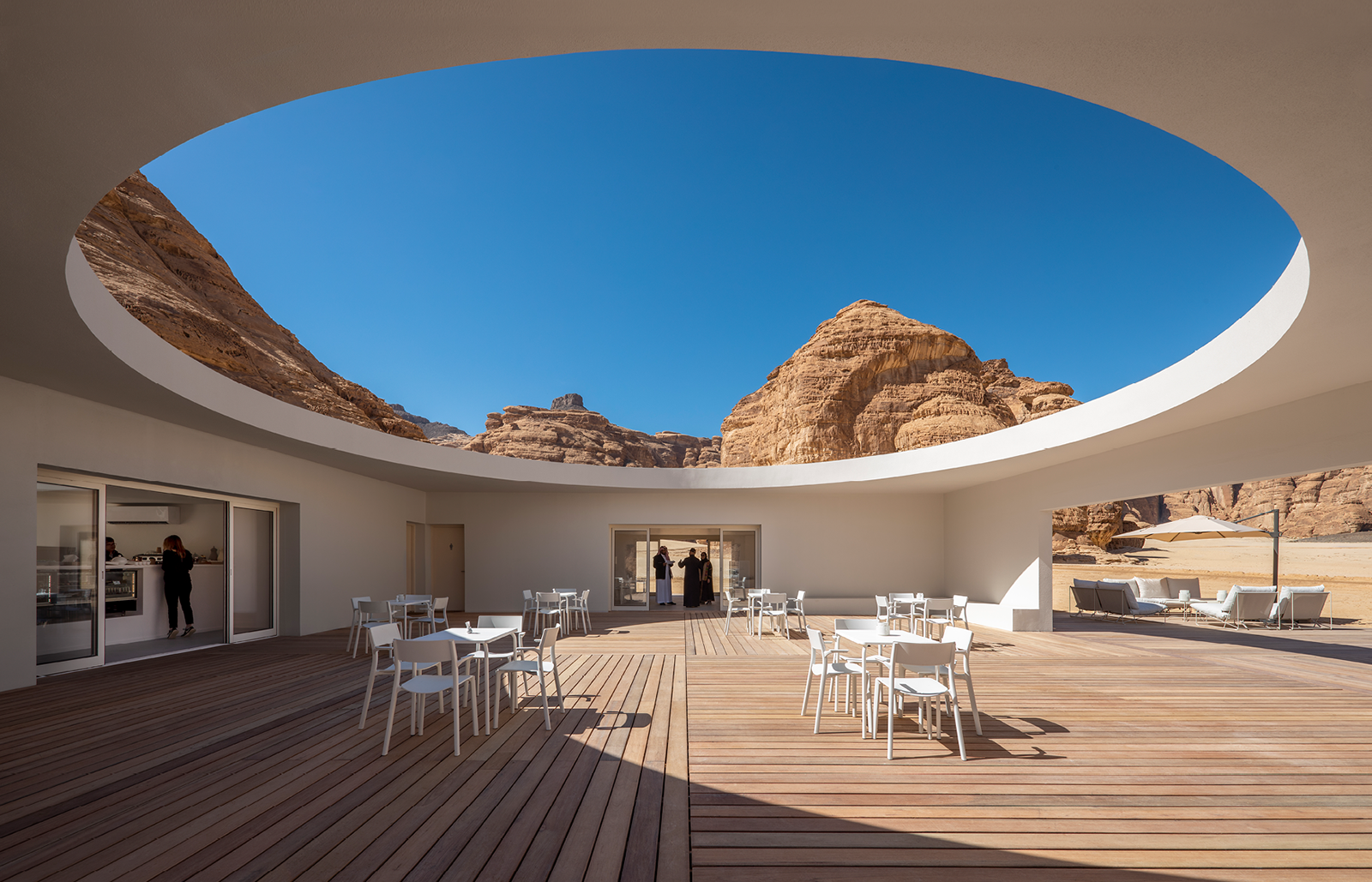





 desert botanical garden horticulture center | 80 degrees
desert botanical garden horticulture center | 80 degrees  Desert X AlUla Visitor Centre
Desert X AlUla Visitor Centre  Museum of Outdoor Arts Element House
Museum of Outdoor Arts Element House  Wagner Noel Performing Arts Center
Wagner Noel Performing Arts Center 